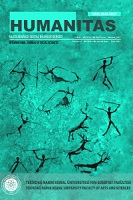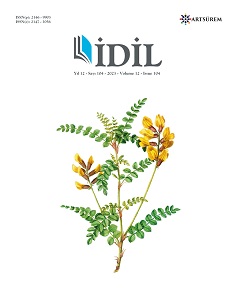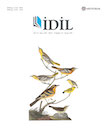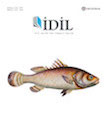Author(s): Gonca Yayan,Nurullah Hekimoğlu / Language(s): Turkish
Issue: 105/2023
Mythological narratives, which are a manifestation of the lifestyles, perceptions, and thoughts of every nation, and thus constitute an important source in the formation of cultural codes, have been a source of inspiration for many artists in contemporary art. One of these artists is Meliha Yılmaz, who produces her works by making use of rock paintings in the geography of the Turkish world, which contain narratives of Turkish mythology. The aim of this research is to reveal how the artist Meliha Yılmaz interprets the effects of Turkish Mythology and mythological elements in her works with a contemporary understanding. Qualitative research method was used in the research, and literature review and work analysis methods were used in data collection. The research is limited to 7 works of the artist. As a result of the research, it was concluded that the artist Meliha Yılmaz interpreted the rock paintings of the Turkish world geography reflecting the humanhuman, human-nature and human-universe relations and the mythological narratives in these paintings with a contemporary understanding, strengthened the expression of the content with a three-layered structure-based plastic expression that supports each other, and in her works. It has been concluded that it includes rich mythological narratives. In particular, the shamanic rituals based on the belief in the sky god and shaman of the Turks, the hallucinatory trance states of the shaman, the elements such as the shaman, the shaman drum in these rituals and the animals such as deer, bull, horse and bird that have an important place in Turkish mythology, the tree of life in the Turkish belief system, the ab-ı life. It has been concluded that he includes allegorical elements such as the container, sun and moon symbols, idols and allegorical formations of spirits, and that the artist interprets these images with his contemporary original style and makes references to the concept of synchronicity in mythology in the plastic fiction of almost all of his works. In addition, it was seen that Yılmaz used colors such as white, sky and red, which have an important place in the color symbolism in Turkish mythology, to support the mythological narratives in his works.
More...





